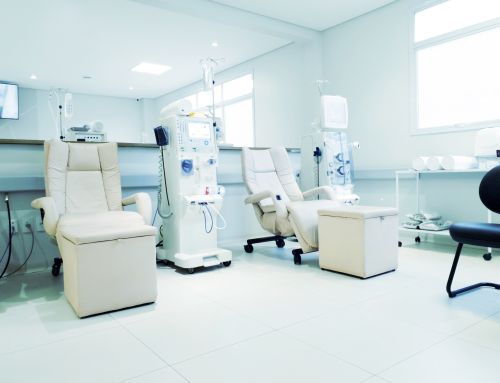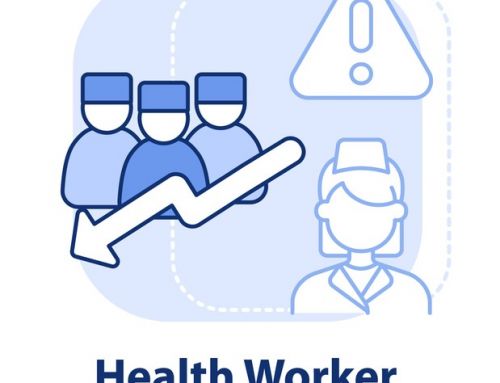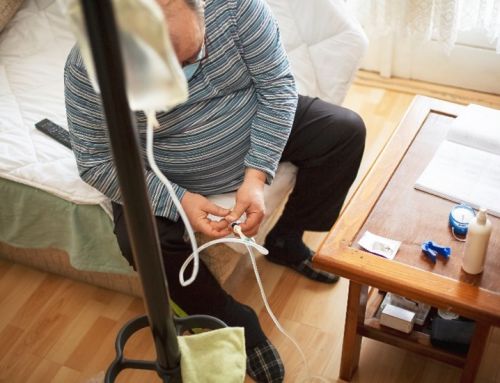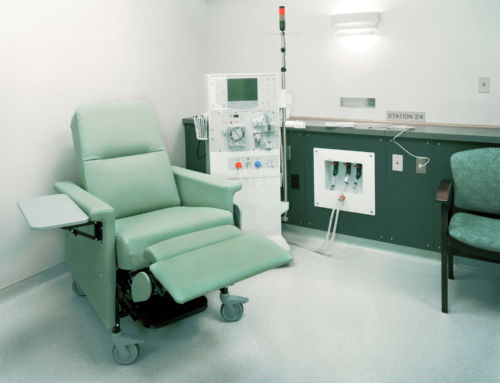DPC recently sent a comment letter responding to the proposed payment rule for CMS’s Medicare End Stage Renal Disease program. Using responses from our 2015 Patient Survey, our suggestions focus on how CMS can improve on the key issues of payment and quality for patients.
On the payment side, we urge CMS to revise its patient-level payment system by focusing on individuals’ experiences, instead of drawing conclusions based off of large amounts of data. Better support of rural facilities and home dialysis is also important, providing more access and opportunity for treatment.
On the quality front, we suggest changes be made to the Quality Improvement Program to better serve patients. This includes improving education about conditions and ensuring that socio-demographic factors do not limit access for patients. We hope these suggestions are considered when drafting the final rule.
Read the letter below:
Andrew Slavitt, Acting Administrator
Centers for Medicare and Medicaid Services
Department of Health and Human Services
Hubert H. Humphrey Building
200 Independence Avenue, SW
Washington, D.C. 20201
Re: CMS-1628-P: End-Stage Renal Disease Prospective Payment System, Quality Incentive Program
Dear Mr. Slavitt:
Dialysis Patient Citizens (DPC) appreciates the opportunity to provide the Centers for Medicare and Medicaid Services (CMS) with comments on the proposed payment rule for the Medicare End Stage Renal Disease (ESRD) program. As America’s largest patient-led organization representing dialysis patients, DPC’s membership consists of more than 28,000 dialysis and pre-dialysis patients and their families. We seek to ensure the patient point of view is considered by policy makers.
DPC’s mission is to improve the quality of life of dialysis patients by engaging policy makers, providers and the public. Through patient education, empowerment and advocacy, we work to increase awareness about kidney disease and promote favorable public policy. However, improving quality of life for patients can only go so far without improving the quality of care patients receive. DPC knows that a diagnosis of ERSD does not mean the end of life. Dialysis patients can lead long and productive lives because Congress and CMS have shown commitment to ensuring patients have access to quality kidney care. It is for these reasons that we respectfully submit comments on the NPRM.
One overarching point forms a theme for our comments on both the payment and QIP components of the rule: Data is a tool to be studied to serve policy purposes; the availability of, or convenience of using, a particular source of data should not drive policymaking. We feel that the Agency has made policy the servant of its databases’ idiosyncrasies in this rulemaking cycle. We urge that regulators re-orient themselves with the goals they share with beneficiaries—to ensure access to care and incent providers to deliver high-quality care—and take a fresh look at how data analysis can help accomplish these goals.
A. Payment Issues.
There are two primary sets of changes to payment in the NPRM. One revises adjustors based upon characteristics of patients served at the facility level. The other alters adjustors based on facility characteristics. We applaud the Agency’s vigilance in analyzing different facilities’ costs, as this is necessary to ensure patients’ access to care. However, as explained below, we support the latter changes but not the former.
1. CMS Should Revisit Its Proposed Revisions to Patient-Level Adjustors.
The NPRM proposes new adjustors for age ranges. It appears that here, the agency has engaged in “data dredging,” the practice of analyzing large volumes of data to seek statistically significant relationships, without being guided by any hypothesis or explicit theory about behavior. The theory that should be guiding this research is that there exist characteristics of patients that make them more costly to care for and therefore likely to be avoided by providers absent additional reimbursement. We are not aware of any complaints from patients that they are experiencing access problems due to their age, nor complaints from providers that they are under-compensated for patients in certain age groups. Indeed, it strikes us as counter-intuitive that patients in the 60-69 age group would be $16 more costly to treat than those in 70-79 age group. On the other hand, if the relationship between age and cost does not exist, we can imagine providers gaming this adjustor, especially given the significant drop in the base payment rate—nearly $20; as well as the possibility of dollars dropping out of the overall ESRD program due to an inaccurate budget neutrality adjustment.
We are further puzzled that the Agency has taken the characteristics of group of patients at the facility level to make inferences about individual patients. It appears that this was done solely by reason of the convenience of having cost data available at the facility level, but not at the individual level. This approach is vulnerable to the ecological fallacy. If this work is worth doing, it is worth doing correctly, using patients as the unit of analysis. DPC and its members are available to CMS to assist in generating hypotheses to explore in appropriate statistical analyses of cost differentials.
2. We Support Maintaining Payments to Rural Facilities.
DPC supports the proposed changes to the rural and low-volume facility adjustors that will maintain payment levels at roughly their current levels. MedPAC has found that freestanding dialysis facilities classified as “rural” had only a 0.6 percent aggregate margin in 2013, compared to 4.9 percent for “urban” facilities. The two quintiles of facilities with the lowest treatment volume had negative margins, -12.3 percent for the lowest quintile and -3.8 percent for the second lowest.
We would draw your attention to the situation in International Falls, Minnesota. The nearest dialysis facilities to this community, known for its extreme weather conditions, are over 100 miles away; yet 17 dialysis patients live within a 50 mile radius of the town. Community leaders and health care experts believe that the town merits its own free-standing clinic, but the large dialysis organizations have declined to open a facility there. The good news is that the county government and/or the local non-profit hospital are likely to front the start-up costs to open an independent clinic, and that the clinic is projected to generate sufficient revenue to produce a positive cash-flow within a year. But we are disheartened that the Medicare payment apparently does not suffice to attract a for-profit LDO, as those organizations have greater access to capital and economy of scale in purchasing and other overhead costs. CMS must remain vigilant to ensure that Medicare payments are sufficient to support the nationwide kidney care infrastructure that Congress intended Medicare coverage for ESRD to foster.
3. CMS Should Ensure that Barriers to Use of Home Dialysis Are Addressed
Many experts agree that home modalities can offer improved outcomes for ESRD patients. CMS should take care that any barriers to home dialysis that are amenable to policy solutions be removed.
We are concerned that the current requirement of a care partner for home hemodialysis may be a barrier. In our 2014 Annual Patient Survey we asked patients who receive in-center dialysis to give their reasons for not considering home hemodialysis. Thirty-seven percent of patients responded that they had no one to help them. We urge the agency to explore whether home health agencies may be an appropriate resource for patients without a care partner.
Another barrier may be payment rates for home dialysis. A review of Dialysis Facility Compare data indicates that only 18% of dialysis centers treat even a single home hemo patient. Ten percent of in-center patients who responded to our survey indicated that they would consider home hemodialysis if their facility provided home training, while six percent would consider PD if training were available.
Home training payment rates should be more closely related to the cost of providing such service. CMS should establish an appropriate payment for home dialysis training consistent with cost reports and reported time requirements in CMS’ manuals. However, we do not support cutting the base rate that applies to all dialysis patients for the benefit of those limited number of patients who receive home dialysis. CMS has the authority to make reasonable payment for this add-on service in a non-budget neutral way.
B. Quality Issues
DPC supports the use of pay-for-performance programs for dialysis care. The fact that the Quality Incentive Program serves only to reduce and not redistribute payments makes it all the more important that CMS use QIP authority wisely to align provider priorities with patient priorities.
1. CMS Should Move Expeditiously to Add Patient Experience Metrics to the QIP.
We were disappointed to see that CAHPS scores are to be paired with a readmission penalty in a “Patient and family engagement/care coordination” domain. In the Hospital Value-Based Purchasing program, CAHPS scores stand alone in their own Patient Experience domain, and the proposed combination of an outcome measure with a patient satisfaction measure seems to denigrate the importance of the patient survey feedback.
We are also concerned about the length of time it is taking to bring CAHPS scores to bear on QIP performance, and by the fact that this year’s NPRM presents no policy options for CAHPS scoring that stakeholders can evaluate.
Over the past year, DPC has assessed patient priorities for performance measurement through a patient focus group and a large-scale survey with more than 650 dialysis patient respondents, about 3/5 of whom were DPC members and 2/5 were not. Our survey instruments included most of the items currently in the QIP or Dialysis Facility Compare star ratings, several patient-reported outcomes covered in the Kidney Disease Quality of Life (KDQOL) survey, and other dimensions that have received attention in the kidney care community.
By far, patients’ top priority is what we call a “staff respect/listening” subdomain referring to CAHPS questions #10 and #12: “did the dialysis center staff listen carefully to you?” and “did the dialysis center staff show respect for what you had to say?”
During our focus group, it was apparent that patients are riled by encounters with facility staff who are dismissive of their concerns. While our survey respondents may not be representative of all ESRD patients—many are longtime veterans of dialysis who are exceptionally engaged in their care—they feel strongly that they know a lot about their treatment, often more than facility technicians, and demand that staff be responsive to their unique concerns. We ask you to consider breaking out these questions currently on the CAHPS questionnaire (#10 and #12) for separate scoring and reporting, and significant weighting in determining QIP scores.
The second most frequently mentioned care dimension in our large-scale survey was physical comfort during dialysis, item #15 on the CAHPS questionnaire.
2. CMS Should Pursue New Measures of Importance to Patients.
The fourth most frequently mentioned care dimension in our survey was patient education.
During our focus group, participants indicated that sometimes education is cursory, such as distributing numerous handouts and asking for receipt signatures, rather than the in-depth conversations that convey the information that patients need to put them in control of their health. There is also concern that education is front-loaded upon incident patients who are too overwhelmed to absorb it, and not reinforced afterward when the patient may be better equipped to act upon it. We understand that in the past there have been unsuccessful attempts to formulate a measure capturing this dimension. We ask CMS to prioritize another run at this. One step, perhaps temporary, might be to compile education-related responses to CAHPS (e.g., #26, #27, #30). We would suggest convening a Technical Expert Panel to further develop this area.
Among current and proposed QIP measures, dialysis adequacy, infection control and anemia management are included in the top six priorities in both our large-scale survey and volunteer poll, and we reaffirm our support for their inclusion in the QIP.
Our surveys show interest in possible patient-reported outcome measures of fluid management, such as two KDQOL items, cramping and washed-out feeling, as well as in a “Healthy Days at Home” measure such as the one recently floated by MedPAC. We urge the Agency to proactively pursue development of measures important to patients, rather than let the inertia of currently-collected data unduly influence the composition of the QIP.
3. The QIP Should Be Revised to Ensure That Socio-Demographic Factors Don’t Reduce Payments
We continue to have concerns about the use of health outcome measures in the context of a nationwide tournament. We are pleased that the Agency did not propose including two outcome measures currently reported on Dialysis Facility Compare—hospitalizations and mortality—in this QIP rulemaking. We hope that their absence reflects a conscious decision by the Agency to avoid implementing more such measures in pay-for-performance programs while the impact on these measures of socio-demographic status is fully debated. Please note that we do not categorically oppose the use of health outcome measures in P4P programs; our position, like MedPAC’s, is that providers should be compared to peers serving demographically similar populations. (Also, we do not oppose nationwide standards for intermediate clinical outcomes or outcomes that most probably reflect care directly delivered within dialysis facilities.)
We remain skeptical that the readmissions measure in the QIP fairly judges the quality of care delivered by dialysis facilities and urge CMS to revise it. Our concern arises from the interaction of this measure with the readmissions measure for hospitals and the geographic pattern of the hospital readmission penalty’s application.
Hazard, Kentucky and Harlan, Kentucky are two communities that are each home to a hospital and to a dialysis facility. The poverty rates in these counties are 27 percent and 29.5 percent respectively. Both the Hazard and Harlan hospitals have been assessed the full three percent readmissions penalty. Both the Hazard and Harlan dialysis facilities have “higher than expected” readmission rates according to Dialysis Facility Compare. It is interesting to note that, according to CMS’ Compare websites, the Hazard hospital readmission ratio is calculated based on 2,306 patients and the Hazard ESRD readmission ratio is calculated based on 196 discharges, during overlapping but not contemporaneous time periods, suggesting that close to ten percent of the discharges for which the hospital was penalized involved dialysis patients.
There is no question that both the hospital and dialysis facility can, in cooperation with the nephrologist, help prevent readmissions. But our suspicion is that the readmission rates of hospitals and dialysis facilities in their catchment areas are closely correlated, and not because nearby unrelated provider organizations coincidentally provide poor quality of care. It is almost certainly the same underlying population health factors are responsible for the high readmission rates at both the hospital and dialysis clinic.
If providers feel that these penalties are inevitable and unavoidable due to characteristics of the population they serve, they have perverse incentives to1 stop incurring the extra expense of readmission prevention measures if they cannot recoup those costs through avoided penalties and2 in the case of for-profit dialysis organizations, avoid serving new patients in low-income areas where incidence of ESRD is highest.
The fact that two different health care facilities are to be penalized for the same unsuccessful discharges means that disadvantaged regions are in double jeopardy, receiving reduced Medicare revenue by reason of poverty and the toll that poverty seems to wreak on people’s kidneys.
The convenience of using a certain data compilation should not drive policymaking. In the last century, when researchers first began compiling data, they decided to enter it into nationwide databases. A nationwide database facilitates comparisons of performance among regions. Decades ago, the Dartmouth Atlas spawned numerous studies of geographic variation in utilization. Fifteen years ago, Jencks et al presented state-by-state comparisons of quality indicators.1 These nationwide compendia suggested that providers ought to be held to nationwide standards, namely, that the patterns of care prevailing in, say, Minnesota, ought to be the standard for Florida or Louisiana as well. But more recent work, such as Murray et al, Eight Americas: Investigating Mortality Disparities across Races, Counties, and Race-Counties in the United States,2 make it clear that underlying socio-demographic differences are the main culprit in regional variations in health outcomes, not provider quality, and that most communities are unlikely to achieve Minnesota-level outcomes. The work of Murray and his collaborators should have been a wake-up call to CMS to dismantle its nationwide databases and devolve them to regional or local levels. Instead, the QIP and other P4P programs continue to make national comparisons not because they make sense, but because researchers created a convention for data compilations decades ago.
We urge the agency to adopt MedPAC’s proposed approach of comparing readmissions within a provider’s peer group. In the alternative, we suggest determining a target readmission rate for the dialysis facility based upon nearby hospitals’ historic readmission rate or based upon socio-demographic factors. In either case, the dialysis facility’s objective should be to stay within, or “beat,” a readmission rate that reflects local population characteristics and represents a realistic goal. Further, providers serving relatively healthy or privileged patient panels should be held to higher standards.
Thank you again for your consideration of our comments and concerns. If you have any questions or would like additional information, please do not hesitate to contact me or our Government Affairs Director Jackson Williams.




















